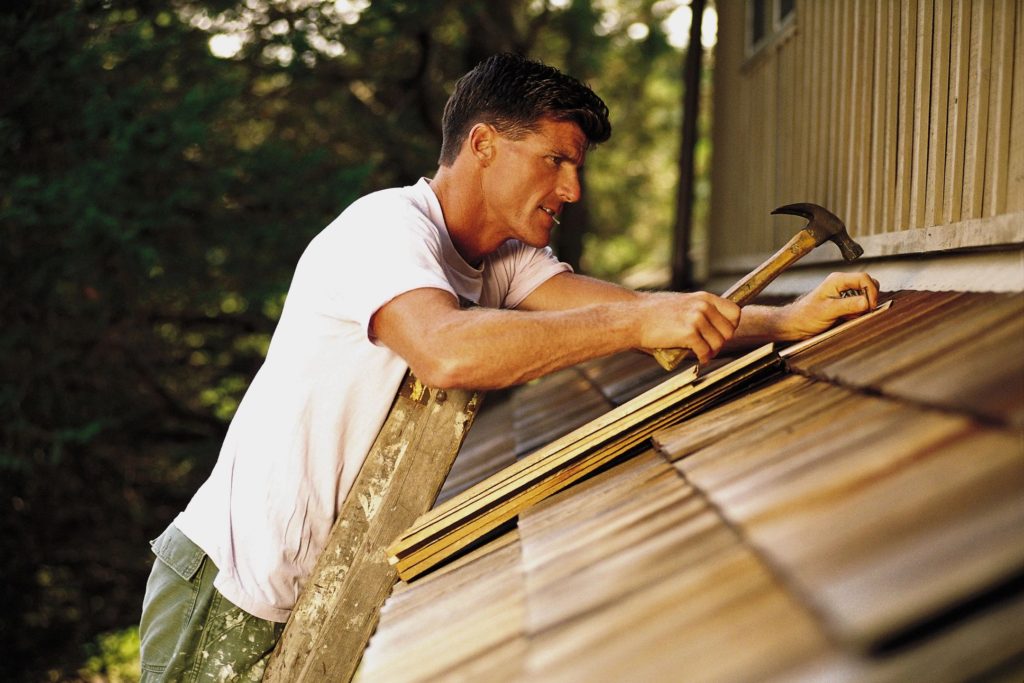The expenses of owning a house do not stop with the mortgage and regular monthly bills. Things break inside and outside the home and occasionally unexpected repairs can set you back financially. It’s important to have a budget set aside for some of the biggest home repairs.
Foundation: This keeps your home above the earth and provides insulations. Dirt settles and the soil underneath the home has settled in different layers over many years. When the layers are unable to bear the weight of the home on top of them, the foundation can begin to sink and settle. The foundation needs to be maintained to keep the structural integrity of the home. Signs of issues might be:
- Water gathering into a pool in the basement, sloping floors, doors that won’t shut, or don’t match up to the frames.
- Exterior large and in a zig-zag form or bricks that are cracked or protruding could be a warning.
- Cracks in walls or above window and door frames.
No matter the cause, foundation damage gets worse over time and needs to be taken care of. The best thing to do is get a trusted professional out to your home to inspect and then determine if there is a problem or not.
Roof: Protects the home from elements, thus, if there are any signs of issues, it’s important to act fast. Things to look for:
- Curled, cracked, or missing shingles means they are at the end of their lifespan.
- Dark, dirty, wet shingles can mean that they are allowing moisture to be trapped and they are not doing their job.
- Shingle granules in the gutters. Once they start to wear out the composite or asphalt shingles start to shed their coarse, black, sandy granules and end up in the gutters.
- Wear and tear around the chimney, vents, pipes or anything else that penetrates your roof may be where the deterioration begins and often the fix can be confined to those areas.
- Leaks in the attic after a storm, or the presence of light coming through in the attic might mean shingles need to be replaced.
Most people don’t really even think about their roof until it’s too late. Don’t wait until water is coming in through ceilings before you call a professional out to inspect. Get up in your attic, as it’s the first place that will give you a clue on your roof’s life.
Termite Damage: If this is left unaddressed problems can make the entire home an unsafe place to live. An infestation can compromise the structural stability of a home. Termites are the sneakest of all the pests.
- Look for rotting stumps or any decaying wood outside your home. If they have moved into those and it’s close to your home, there is a big chance they have found their way into your walls or other wooden areas.
- Have you seen any mud tunnels or tubes? These would be where the termites build and work from the soil to the wood. You can find them in hidden, shady spots on foundations or crawl space cement blocks.
- Wings. Termites shed their wings and you will find piles.
- Damaged wood at structural bearing points.
Damage by termites can be found by poking wood with a screwdriver. Check first the extyerior and interior survaces of the foundation where wood is on or near the soil. Start in the basement with a flashlight and look for mue tubes. The best thing to do is get help from a professional pest control company.
Water Damage: Not only can this cause structural damage but health problems if the damage causes mold growth.
- Look for dark or wet spots on the walls or ceilings.
- Cracking, bubbling or flaking paint on ceilings or walls.
- Damp, musty or mold smells.
Water damage happens a lot more often than you think. It does not matter if the home is new or old, it will result in some serious problems.
Septic Tank: If toilets and drains are clogged or backed up, draining very slowly or if there is standing water near your septic tank there might be an issue. Take notice:
- Is the grass around your septic tank thriving more than anywhere else in the yard? That could mean a leak – once the water escaped the tank it acts as a fertilizer.
- Are there trees or shrubs near the tank? Roots naturally seek out sources of water, including leaky pipes or even condensation. They can end up cracking septic tank pipes allowing dirt to enter or collapse the pipes.
The Bottom Line: Experts recommend saving 1%-4% of your home’s value per year for repairs and maintenance. If you don’t have the money and need to pay for home repairs, consider a home equity line of credit or home equity loan.

 See Our National Coverage Map
See Our National Coverage Map